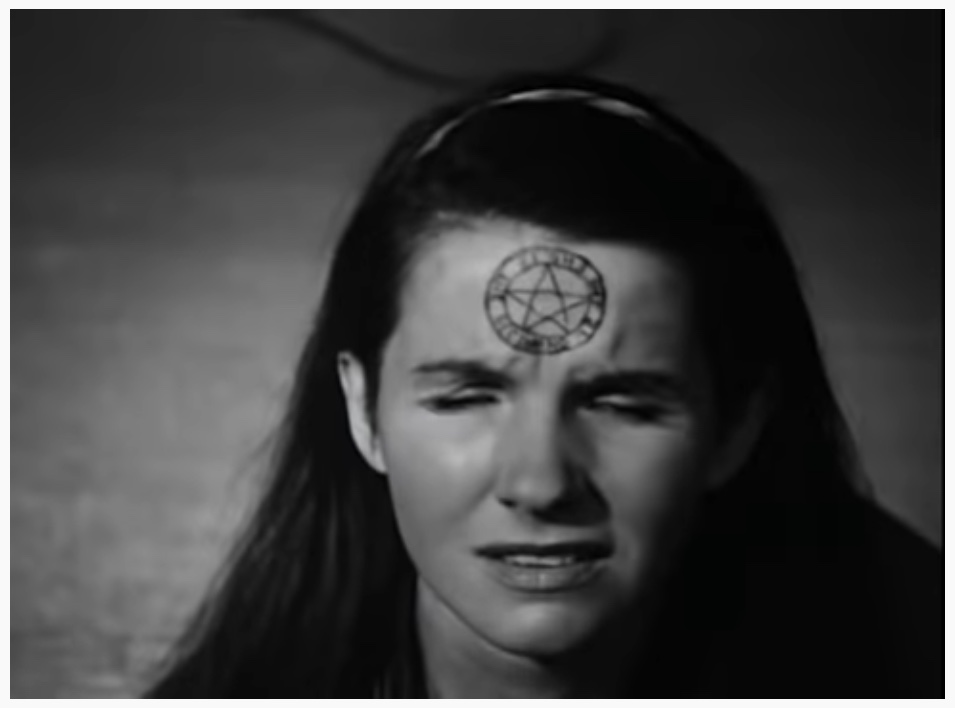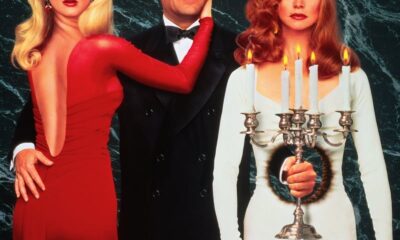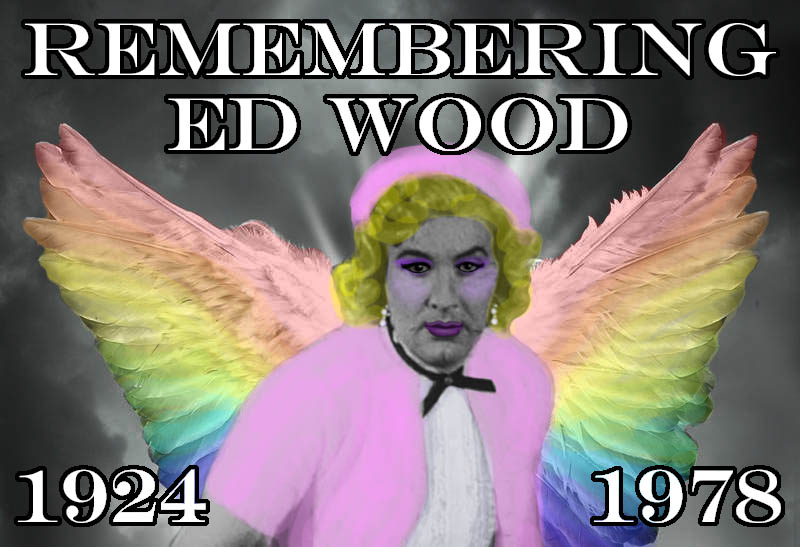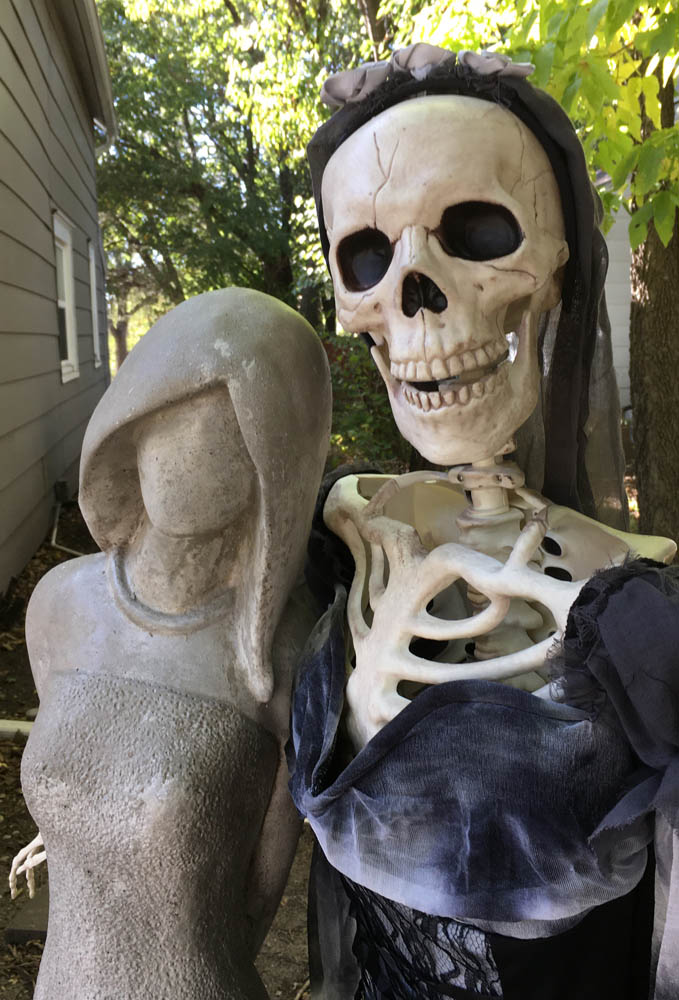
Stepping Through the Afternoon: a Review of Maya Deren
Continuing my series exploring YouTube with Ask a Mortician and Obsolete Oddity, I will now focus on Maya Deren, since many of her films can be found there. This isn’t so much of a review, or a foray into film criticism, symbology, theory or meaning (there is plenty of that out there if you wish to seek it), but rather a personal exploration of a late great filmmaker. Born in 1917, Maya Deren was a Ukranian-American filmographer best known for her film and choreography work in the 1940s and 1950s. She was very involved in the amateur film movement (focusing on the edge & fringe stuff, kind of like punk in its day), experimental film and the avant-garde.
What I appreciate most about Maya Deren’s films is that they have a rather disturbing surreal quality that is further enhanced by how scenes are cut and transitioned, their timing and perspective, and a more conceptual influence rather than a focus on space and time as we perceive it physically. Every movement has a sense of meaning and significance. Actions, costuming and backdrop become very impactful, not because of high budgets or involved underpinnings, but because of how things flow together. The result feels accessible but not entirely tangible, like a journey into the subconscious or a dream-like reality.
I am including three of Maya Deren’s films here for you to enjoy, starting with the most iconic Meshes of the Afternoon and then including my personal favorite At Land and also Witch’s Cradle, a collaboration with Marcel Duchamp.
If the video doesn’t load properly, you can find it on YouTube here. https://youtu.be/dWQcJyn981M
Meshes of the Afternoon was Maya Deren’s debut film and has been considered among both the best and worst films ever made depending on who you ask. The first time I saw it, I was transfixed. I felt a personal kinship with this filmmaker who lived and worked decades prior to myself for, despite my lack of awareness of her work, I was using many of the same symbols. I had even created a mirror mask that I could wear to engage in performance art – a one-way mirror that from the outside reflected the viewer’s visage back at them while I could see everything through it and engage accordingly. Other references and relationships with objects (broken glass, mannequins, flowers, keys, possible suicide) had also appeared in my work. I had also experimented a bit in video in film speed and intentional repetition. I watched the film over and over again, each time picking out more details than the time prior.
If the video doesn’t load properly, you can find it on YouTube here. https://youtu.be/aW7fhlJgmwI
At Land is my personal favorite of Maya Deren’s films. I can relate all too well to some of those high class socialite dinner parties where you feel out of place, trying to crawl your way through all of the artifice. I love the transitions and the sense of journey that comes across. The joy, the anxiety, the betrayal… seeking that which you thought you had lost. To me, it’s the ultimate dreamscape adventure-quest, but then again my dreams are not ordinary. Again note: I am not trying to interpret or examine symbology so much as share my personal reaction.
If the video doesn’t load properly, you can find it on YouTube here. https://youtu.be/NkMfRVaA6fs
I love all of the occult references and the repetition of time in this. The exploration of time plays a critical role in all of Maya Deren’s works, but it strikes even more so in this one in particular. Having originally majored in Fiber Arts, I also enjoy the strings that weave through and intertwine between everything. But more than anything, I love “Is The Beginning Is The End…” I have used a similar mantra before in several performance art pieces as a chant, and also as a written work, to further explore narrative as just something one enters into and slips out of, not anything with a definitive start and ending. Like Schmendrick in The Last Unicorn movie says, “There are no happy endings. Because nothing ends.”
Anyway, for all that this isn’t technically a review, I give Maya Deren 4.5 Cthulus.
 (4.5 / 5)
(4.5 / 5)
You can take it or leave it. Personally, I love her work but I know not everyone shares this sentiment, especially anyone who didn’t want to go so much in depth into older works and found themselves in a film criticism class devoted to such pieces. Because if you were expecting to analyze Don’t Hug Me I’m Scared and then wound up back in the 1940s and 50s, that may not have been your cup of tea (for all that the historical references and symbols can shed more meaning on the current). And please be aware: I posted all of these links to silent versions of the films because those are truer to the original, but there are many lovely interpretations involving various soundscapes and audio interpretations if you prefer, just look on YouTube.

Movies n TV
Wheel of Time A Question of Crimson Is a Political Espionage Delight
Episode two of Wheel of Time felt like the beginning of a long journey. Stories are unfolding, lives are changing, and blood is spilling.
Let’s discuss.
The story
We begin this episode in the past with Elayne’s mother, Queen Morgase. It turns out her rise to the throne was a bit, shall we say, cutthroat. So when she shows up at the White Tower, Siuan is concerned.
She might have reason to be, too.
Meanwhile, Rand, Egwene, Moiraine, Lan and Aviendha are in the Spine of The World. As they travel through some of the most breathtaking lands I have ever seen on a TV show, Egwene is plagued with nightmares. We think at first that’s just her trauma working itself through her system. But we soon find out that it might not be that straightforward.
Finally, Perrin returns home to heal after his hand is almost cut in half. But when he gets there he finds the town has been infested by Children of The Light. And they’re looking for him.
What worked
There was something heartwarming in this episode about political espionage and choking religious persecution. And that is Elayne’s relationship with her family.
I have consumed a lot of fantasy content with royal families. And I have never once heard a princess call her mother ‘Mum’. I’ve never seen royal siblings get along. And I have sure as hell never seen a princess have a good relationship with her step-parent.
This was refreshing. Even though Queen Morgase is kind of a horrible person she seems like a good mother. And that’s an unexpected delight.

Of course, this is just one storyline among many. And while this can sometimes be overwhelming, in this case it wasn’t.
I’ll be honest, some of these storylines are going to drag for me. I know this because I’ve read some of the Wheel of Time books and I have an idea that not all the characters exactly pique my interest.
No one likes all the characters. No one likes all the storylines. While I am here for the political espionage between Queen Morgase and Siuan, not everyone likes it. While others might be fascinated with Selene trying to win Rand back, I couldn’t care less.
Having multiple storylines keeps everyone’s attention better. So long as things don’t get out of hand. Things can easily get out of hand. But this seems to be managed well.
So far.
What didn’t work
As I mentioned above, I’m not thrilled with Rand’s story at this point. And while it’s fine to not like a storyline when there are this many to choose from, it’s not fantastic that the one I like the least is the one involving our two main characters. And anytime we were with the team at the Spine of The World, the only thing that brought me joy was Moirain’s hat. It reminded me of Stockard Channing’s hat in Practical Magic.
The problem is that Rand is Charlie Brown with controversial magical powers. He is boring, serious, and pessimistic.
And yes, I understand that he has a heavy emotional burden and he’s the Dragon Reborn and that’s quite taxing and all. But let’s be fair, there isn’t a single person in this show that doesn’t have a heavy burden. And most of them manage to be fun occasionally.

All that being said, this episode of Wheel of Time did exactly what it needed to do. It set up conflicts at each of the three locations. It established emotional ties between the characters and the events. And it established goals for everyone.
This was, in short, a solid episode. Not groundbreaking, not mind-blowing or life changing. It was simply good. It was entertaining and moved the plot forward.
Well done.
 (3.5 / 5)
(3.5 / 5)
Movies n TV
Wheel of Time Returns With A Bang
Wheel of Time is back for season three. There are mixed feelings regarding this. Last season, there were some serious pacing issues. And some serious sticking to the book’s storyline issues. But we’re two seasons in, and we don’t give up so easily. So let’s dive into episode one, To Race the Shadow.
By the way, I highly recommend watching this episode with the subtitles on. You’ll see why.
The story
We begin this episode with Liandrin facing a trial of sorts for her rampant betrayal. She does her best to gaslight her Aes Sedai sisters into thinking that Siuan Sanche is the real traitor.

When that doesn’t work, she reveals how many Black Aes Sedai have actually infiltrated the tower.
Spoiler, it’s a lot.
In the aftermath, our whole team gathers to drink and enjoy one night of relaxation before they head out to the Tear to form an army for Rand. All is going well until they’re attacked by myriad creatures and a sentient axe.
What worked
This episode was long. It had a run time of an hour and eleven minutes. And a lot of that run time was spent in heavy dialog scenes.
Fortunately, these were well-done scenes.
If you’re going to have a lot of talking scenes, there are good ways and bad ways to do it. Last season, we saw lots of examples of the bad way to do it. But this episode did it well. For one thing, other things were going on while conversations were taking place. The characters are drinking, playing games, walking through an interesting city. And the scenes themselves didn’t stretch out. They weren’t repetitive. We heard what the character had to say, then we moved on.
It was also nice that the point of these scenes wasn’t just info dumps. We had character development. We had romantic interactions. We had plot development and foreshadowing.
Overall, this episode felt like what it was. A moment of calm before a storm.
Taking a step back, I’d be remiss if I didn’t address the fight scene at the start of the episode. Because it was epic.
The magic looked amazing. The martial arts that went along with it looked fantastic. The costumes were beautiful. It was just incredibly fun to watch.
More than that, it was emotional. We lost some characters in that fight that were important. And it was clearly emotionally shattering for many of our characters, who found themselves betrayed by people they trusted.
So many of them.
It was a great way to open the season.
What didn’t work
Despite that, this episode wasn’t without its flaws.
First off, there were a lot of dialog scenes. And they were good scenes, as I’ve already discussed. But it was one after another after another. And when your episode is, again, an hour and eleven minutes, it’s maybe a little much to have so much chit-chat. Couldn’t some of these conversations, important as they were, have been moved to maybe another episode?
Finally, I want to talk about Egwene’s travel through the arches.

I feel like maybe there were some deleted scenes here. Because there must have been more to that visit than what we saw, right?
We could have seen Egwene battle Rand. That would have been badass and emotionally devastating. We could have seen her with a quiet life with Rand back home at the Two Rivers. We could have seen anything except for the quick clip of Rand in a bloody river, followed by Egwene being shoved back out in a bloody shift.
Bad job. But at least it wasn’t an extended scene of Moiraine collecting bathwater, and then taking a bath while looking sad. If we’d started this season with another scene like that, it might have broken my brain.
Amazon dropped the first three episodes at once. So we’ll be back soon to talk about episode two. See you then.
 (4 / 5)
(4 / 5)
Movies n TV
Entertaining as hell: Eight Legged Freaks (2002) Review
Early 2000s is a special era for the industry. It accepts the cheesiness and corniness of movie making, in turn producing some gems in their own right. Eight Legged Freaks starring David Arquette and young Scarlet Johanson is a horror comedy about giant spiders who overtake a small town. As crazy as that premise sounds, the movie surprisingly has a ton of heart and is super entertaining. Let’s review, shall we?
Plot
We start Eight Legged Freaks with a shot of toxic waste spilling into the water supply of Joshua, a spider farm owner. He is friends with Mike, one of our protagonists, who is a science geek and a spider enthusiast. Mike notices something quite right upon visiting Joshua, but no one takes him seriously. We are then introduced to the rest of the crew. Mike’s mother Samantha, the town sheriff, is too busy chasing Ashley, his sister, who is dating the town mayor’s son Bret (something Samantha does not approve of). We also have Chris, who returns to the town to save his father’s legacy in the town mines. He has opposition from Wade, Bret’s father, who wants to use the mines for his business ventures. Lots of drama going on that will only get juicier once the spiders get loose.
The creepy crawlies quickly dispose of Joshua and make their grand appearance after Ashley rejects Bret’s advances, abandoning him in the middle of a desert. A glorious chase sequence ensues as the spiders make their way towards the town, wreaking havoc on its residents. In a true horror fashion (which the movie acknowledges), it takes some convincing from Mike and then from Samantha for the town to take the threat seriously. The tongue-in-cheek style of narrative adds the comedy aspect to a movie that would otherwise burn out fairly quickly.
The remaining characters hide out in a shopping mall as it’s the only somewhat sturdy building in the area. This doesn’t last long as the spiders break in, forcing them to run through the mines. Their resources to fight the creepy crawlies off are limited as the methane gas doesn’t allow them to use firearms. Such conditions require resourceful thinking from Chris, who uses perfume to fend off the leader of the spider group and save himself during the climax of the movie.
Character dynamics are not forgotten once the action kicks in. We have Chris confessing his long-term feelings for Samantha which she knew all along, which provided some comedic relief. Bret also reunites with Ashley and apologises for being an asshole. Mike finally gets the appreciation he deserves as his knowledge saves the townsfolk more than once during the whole ordeal.
We end the movie with the town’s radio show person telling the story as an urban legend during his segment. This brings it into question – how much of it happened the way he said it did? We can only guess…
Overall thoughts
Eight Legged Freaks is a fun creature feature with some self-aware commentary on genre tropes that doesn’t take itself too seriously. The acting is good, the pacing fitting and the characters are likeable enough for you to want them to make it through. Definitely a must watch, if you don’t suffer from arachnophobia, that is.
 (5 / 5)
(5 / 5)








